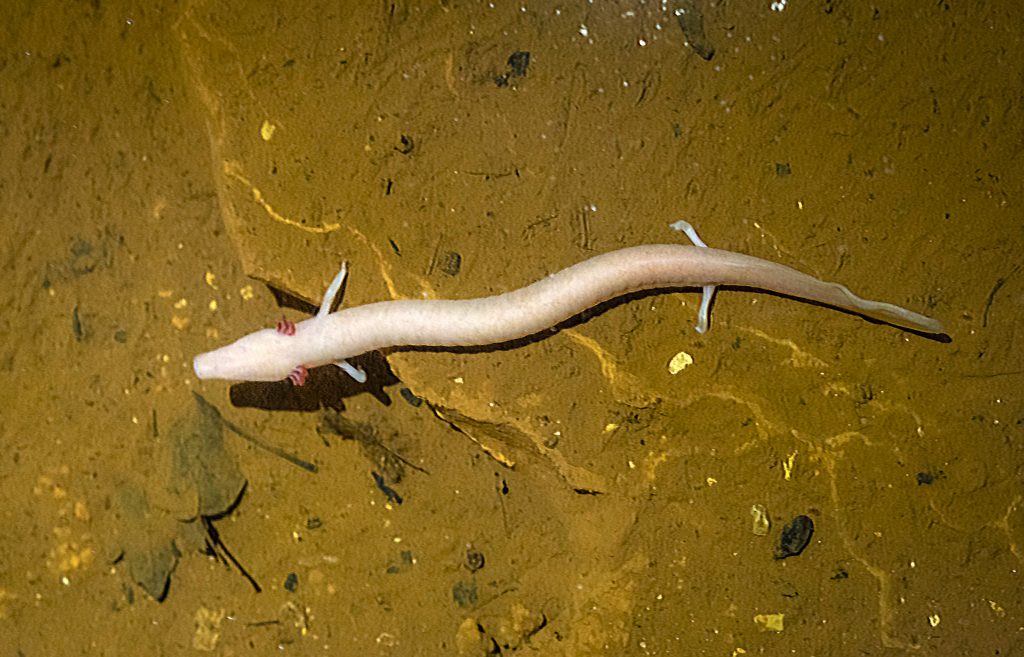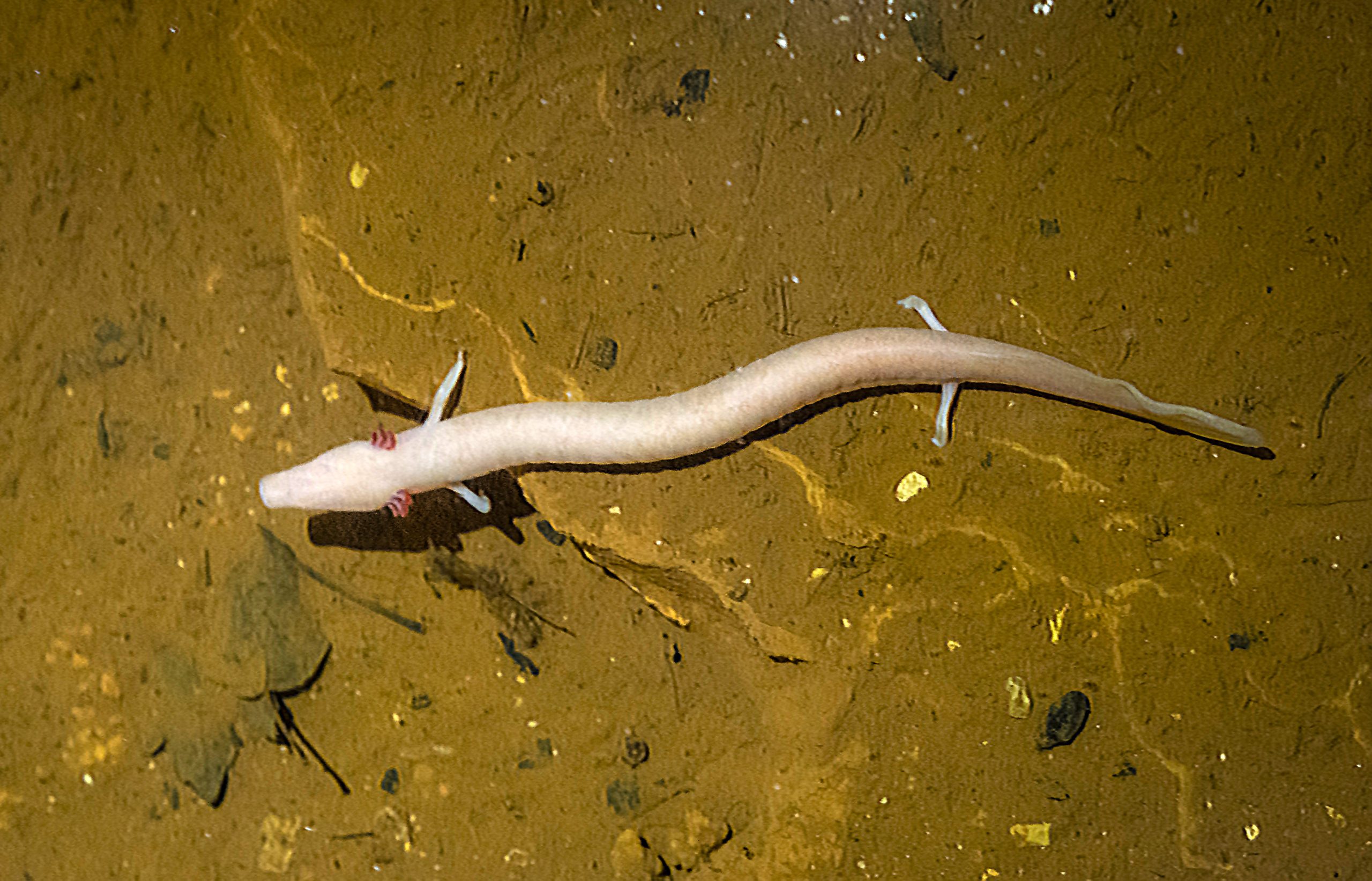If you look at our logo, you can see an amphibian called “OLM”. See now why it is important to us and how it is related to the digital revolution that we carry out in the medical industry.
First of all, the scientific name of the olm is “Proteus anguinus” and, in popular culture, it is known as “baby dragon” or “human fish”. This amphibian lives in the darkness of the caves in Slovenia, Croatia, Bosnia-Herzegovina and Italy. We are faced with a strange but absolutely unique animal.
With eyes hidden, no pigmentation but with outer gills and a length of 30 centimeters, the olm can live up to 100 years, that is a century! It is a true prodigy of resistance since it can survive without food for up to 6 years by feeding itself. It appears as a symbol of Biodiversity and good conservation of natural spaces.
Its adaptation to the natural environment of darkness includes a large number of chemical, electrical, mechanical and geomagnetic receptors and sensors.

Adapted to unique conditions
Natural evolution has ensured that our amphibian has adapted to the unique conditions that caves offer. This is the main reason that identifies ourselves with it: the extraordinary adaptation to this complicated ecosystem using a variety of sensors and particular behaviors.
Thus, we can say that our suite of applications is fully adapted to the unique requirements that characterize the medical industrial ecosystem. Moreover, we continue improving every day, with new functionalities, better behaviors, responsive adaptations to each device and more applications.
ver también ¿Qué es lims?
Although the olm cannot use its eyes to see anything, it can orient itself inside the cave using the sensors. We use Artificial Intelligence as the new Innovative Solution to success in the medical complex situations.
To learn more about the Proteus Anguinus, we can recommend a visit to the Postojna Caves in Slovenia where they have a Vivarium with several specimens.
https://www.postojnska-jama.eu/en/
